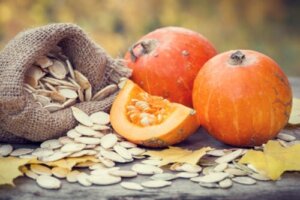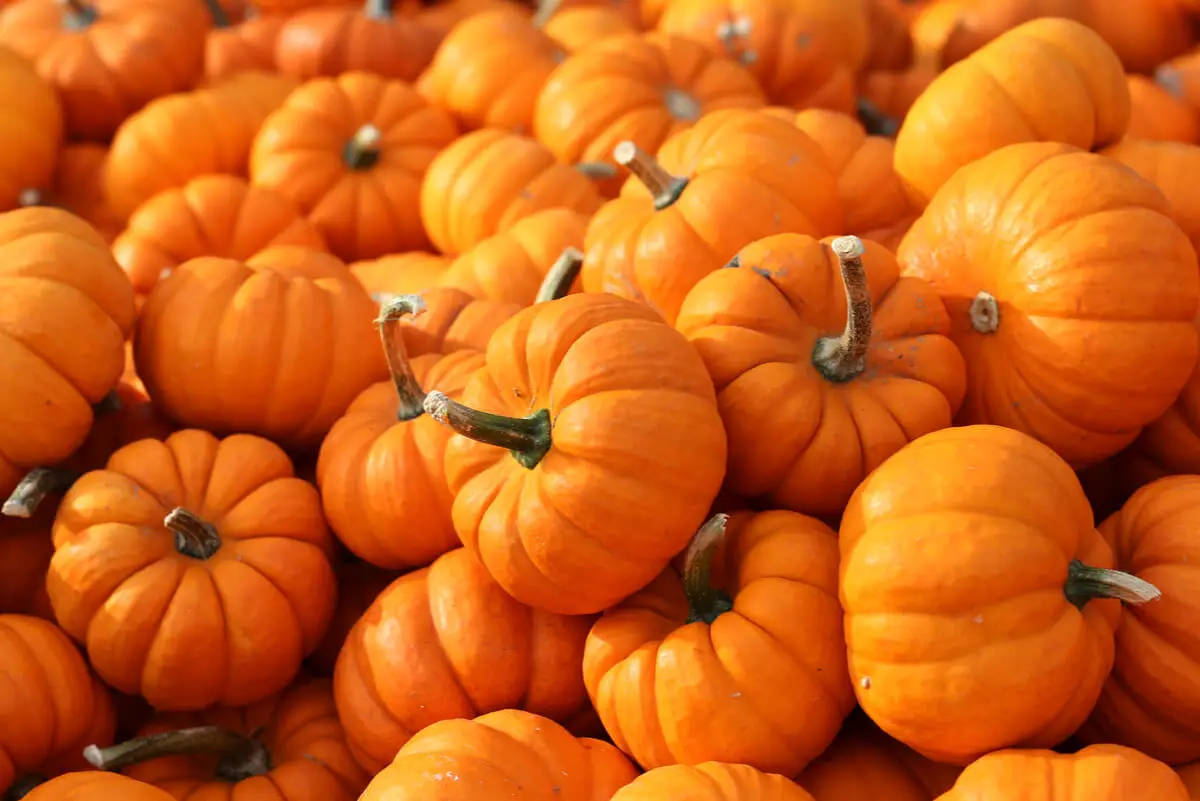How to Freeze Pumpkin: Tips and Tricks


Written and verified by the nutritionist Anna Vilarrasa
Can you freeze an omelet, an avocado, tomatoes, pumpkin, or even paella? Sometimes it’s difficult to know which foods can lose their properties when subjected to low temperatures. In this article, you’ll find out if it’s possible to freeze pumpkin and how to do it to preserve its qualities to the maximum.
The value of frozen vegetables depends, in large part, on a choice of quality raw materials. It also depends on following the right steps to prepare, handle, and preserve food safely.
Pumpkin: A delicious and nutricious autumn vegetable
Pumpkin or squash is the berry fruit of the zucchini plant. It can present very varied forms (elongated, spherical, flattened, etc). Its pulp is usually of orange color more or less intense and is full of seeds in the central part.
At nutritional level, it’s possible to emphasize that this is a very light food with a great quantity of water and fiber in its composition. It also provides vitamin C, different types of carotenoids, as well as some minerals (magnesium, potassium, and manganese).
In addition to all its nutritional properties, pumpkin is versatile in the kitchen. Its flavor is mild and sweet, so it is ideal for all kinds of recipes, whether savory or sweet.
That said, it’s worth introducing it into your daily diet to increase the variety of vegetables you eat. To do this, it will be of great help to know how to preserve it. One of the possibilities you have is to freeze it. We’ll tell you all about how to do this in this article.
Why freeze pumpkin?
This fall and winter vegetable will last awhile if you keep it intact and in good condition. It’s necessary to store it in a cool, dry place and protect it from intense cold and heat. In this way, it can last about 6 months. However, in some situations, it’s preferable to freeze it.
It’s always advisable to do so when food is about to spoil to avoid throwing it away. This is also true for pumpkins. Most specimens are usually quite large, so it’s easy to end up always having a piece left over.
If you freeze it cut, you can have the necessary for each recipe without having to use the whole piece at once. In fact, all of those people who are real pumpkin fans may find it interesting to freeze a quantity before the end of its season!

How to freeze pumpkin
For the proper freezing of any food, it’s recommended to do it without water or air. In this way, the properties are kept intact and don’t become watery or suffer from oxidation. To do this, it’s important to use the correct containers with hermetic seals.
It’s also advisable not to keep it all together in a single package, nor whole. It’s better to separate it into individual portions or small quantities. When it is time to use it again, only the required quantities are taken out. It’s important to keep this in mind, because once thawed, it must be consumed and can’t be refrozen.
It’s advisable to mark the date on the package to keep track of shelf life. When preserved in good conditions, in the freezer, it lasts up to 2 months without losing its properties. This also prevents the appearance of burns on the surface of the product.
There are two basic ways to freeze pumpkin. It can be done raw or once it is cooked. Choosing one or the other depends on the purpose and intended use in the kitchen. Both are similar, and we’ll tell you how to do each of them below.
We think you may also like to read this article: How Long Does Cooked Food Last in the Fridge?
Ways to Freeze Raw Pumpkin
Using this method of preservation without subjecting the food to any prior cooking is very useful when you don’t know what you’re going to use it for. Also, when you have a large quantity, and you want to use it in different types of preparations.
These are the necessary steps to carry it out:
- Before freezing the raw pumpkin, it’s necessary to peel and wash it well.
- Once cleaned, it is cut into 2 or 3-centimeter cubes. Then, place it in a special freezing bag or another suitable container. As pointed out by the American Academy of Nutrition and Dietetics, a good container prevents moisture loss.
- A trick to make it looser is to place the pumpkin cubes on a tray and cover it with plastic wrap. The, put it in the freezer for a couple of hours. After this time, you can store it in bags or glass containers. In this way, the pieces don’t together, and you can take only the necessary ones at a time.
How to freeze boiled, fried, or baked pumpkin
At other times, it’s a good idea to cook the pumpkin first before freezing it, especially if the problem is the lack of time and the need to organize weekly menus. In this case, if you boil, fry or bake it, you can keep it in the freezer afterward.
- To roast it, it’s necessary to peel and wash it first. Then, cut it into 2-3 centimeter cubes or slices. The cuts are similar to those of pineapple or watermelon, depending on the shape of the pumpkin.
- Line a baking tray with parchment paper, place the slices on top, and sprinkle with salt and oil. Bake at 160 °C until soft.
- Once cooked, let it cool and freeze it in the same way as the raw pumpkin.
- This whole process can be used to cook it boiled, baked, or fried, as well as the procedure to freeze it.
How to use frozen pumpkin in your recipes
Once the steps to follow to freeze pumpkin are established, it’s time to learn how to use it when it is time to eat it. Knowing how to defrost in the correct way is essential, since it also depends on it to keep it in perfect conditions, with texture and flavor.
Thaw raw pumpkin in the fridge. You can thaw preserves in small amounts. Remember that if you freeze it cut in cubes, it’s easier to separate it. From this point on, you can use it for boiling, sautéing, or puréeing. Pumpkin is a very interesting and nutritious ingredient with great possibilities in the kitchen.
The same goes for boiled, roasted, or fried pumpkin. When you want to consume it, place it in the refrigerator and let it thaw completely. In this way, it is ready to eat. However, it’s advisable to season with herbs or spices and season again with a drizzle of olive oil.
Some of the most basic preparations are the following:
- Mashed alone or with other ingredients (onion, leeks) to prepare a cream or vegetable purée.
- Served as an accompaniment to a second course of meat or fish.
- As another component of salads, together with potatoes, beans, peas, or cauliflower.
- Sautéed with rice or quinoa.

We think you may also like to read this article: Peruvian Pumpkin Mazamorra Recipe
The main recommendations to freeze pumpkin
Preserving frozen food is a very practical option. This extends the shelf life of those products that are perishable, prevents food wasting, and is an opportunity to save time in the kitchen.
You can freeze pumpkin, either raw or cooked. Although you can freeze it whole (after peeling), we recommend doing it in smaller portions to have the necessary quantities ready. It’s important to remove excess water and let it cool if you froze cooked pumpkin.
For food safety reasons, you must thaw pumpkin inside the fridge and never at room temperature. You can then use the raw pumpkin for your chosen recipes and have the cooked pumpkin ready for dressing and tasting.
All cited sources were thoroughly reviewed by our team to ensure their quality, reliability, currency, and validity. The bibliography of this article was considered reliable and of academic or scientific accuracy.
- Dietitians of Canada. (2020). How to store vegetables to keep them fresh. Consultado el 1 de febrero de 2023. https://www.unlockfood.ca/en/Articles/Cooking-Food-Preparation/How-to-store-vegetables-to-keep-them-fresh.aspx
- Food Data Central. Squash, winter, acorn, raw. (2019). U.S Department of Agriculture. Consultado el 1 de febrero de 2023. https://fdc.nal.usda.gov/fdc-app.html#/food-details/168472/nutrients
- Harrison J.A, et al. (2019). Preserving Food, freezing vegetables. University of Georgia. Consultado el 1 de febrero de 2023. https://nchfp.uga.edu/publications/uga/uga_freeze_veg.pdf
- Klemm S. (2018). Freezing. Eat right. Academy of Nutrition and Dietetics. Consultado el 1 de febrero de 2023. https://www.eatright.org/food/home-food-safety/safe-food-storage//freezing-101
- National Center for Home Food Preservation. (2005). General freezing information. Consultado el 1 de febrero de 2023. https://nchfp.uga.edu/how/freeze/freezer_shelf_life.html
- National Center for Home Food Preservation. (2005). Thawing and preparing foods for serving. Consultado el 1 de febrero de 2023. https://nchfp.uga.edu/how/freeze/thawing.html
This text is provided for informational purposes only and does not replace consultation with a professional. If in doubt, consult your specialist.








